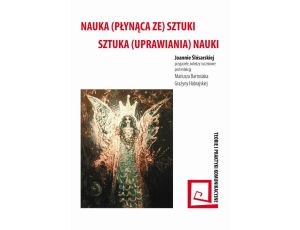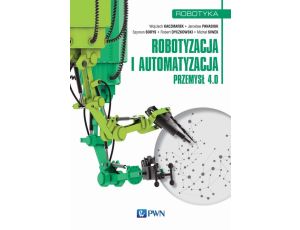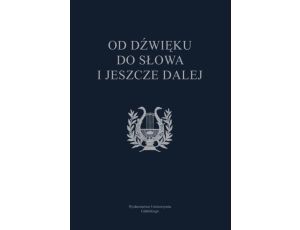Opis produktu
Opinie
Spis treści
Autor przedstawia wyczerpujące kompendium wiedzy na temat roli, kompetencji oraz kształcenia "skomputeryzowanego" nauczyciela języka obcego (w szczególności angielskiego) AD 2011. W jednej rozprawie przyswoił polskim edukatorom języka obcego zasadniczy zrąb dostępnej literatury przedmiotu opublikowanej za granicą (w krajach anglojęzycznych) oraz dokonał całościowego przeglądu literatury polskiej w tym zakresie.
Cechy
| Rodzaj: | e-book |
| Format pliku: |
|
| Autor: | Jarosław Krajka |
| Język publikacji: | angielski |
| Rok wydania: | 2012 |
| Liczba stron: | 344 |
| Miejscowość: | Lublin |
Acknowledgements 9
Introduction 13
CHAPTER ONE. FROM WEB 1.0 TO WEB 2.0 – ON THE HISTORICAL DEVELOPMENT AND THE PRESENT DAY OF CALL 19
1.1. Towards Web 2.0 – on the history of CALL 19
1.1.1. Historical development of Computer-Assisted Language Learning (CALL) 20
1.1.2. The present perspective and the future of CALL 24
1.2. Web 2.0 in language education 26
1.2.1. Definitions and concepts of Web 2.0 26
1.2.2. Major characteristics of the Web 2.0 framework 29
1.2.3. Web 2.0 technologies, tools and services 32
1.2.4. Students and teachers in the Web 2.0 classroom – ‘digital immigrants’
reaching towards ‘digital natives’ 36
1.3. Computer-assisted language instruction in the Web 1.0 age 39
1.3.1. Approaches to Internet-assisted language teaching 39
1.3.1.1. Web-based face-to-face instruction 40
1.3.1.2. Collaborative projects 43
1.3.1.3. Out-of-class self-study Internet use 44
1.3.2. Internet activity formats 46
1.3.2.1. Information collection and analysis 46
1.3.2.2. Interpersonal exchanges 48
1.3.2.3. Problem-solving 50
1.3.3. Problems and pitfalls of Web 1.0 language instruction 52
CHAPTER TWO. SELECTED WEB 2.0 ENVIRONMENTS IN LANGUAGE TEACHING 55
2.1. Concordancing 2.0 55
2.1.1. Issues involved in in-class corpus consultation 57
2.1.2. Using ad-hoc corpora with selected texts 59
2.1.3. Concordancing 2.0 tools 61
2.1.4. Compiling a custom-made corpus 63
2.2. Collaboration 2.0 65
2.2.1. Issues in computer-mediated collaboration 65
2.2.2. Classification of collaboration tools 67
2.2.3. Web 2.0 collaborative environments 70
2.2.3.1. Wiki 70
2.2.3.2. Online word processors 71
2.2.3.3. Online whiteboards 74
2.2.4. Practical classroom ideas based on Collaboration 2.0 environments 75
2.2.5. Guidelines for proper implementation of computer-mediated
collaborative learning 79
2.3. Multimedia 2.0 80
2.3.1. Basic concepts of Web 2.0 authored multimedia 80
2.3.2. The rationale behind the use of multimedia in the language classroom 82
2.3.3. Multimedia 2.0 resources 84
2.3.4. Digital materials development process 85
2.3.5. Classroom implementation procedures and possible problems 89
CHAPTER THREE. FOREIGN LANGUAGE TEACHER IN A CALL CLASSROOM – ATTITUDES, COMPETENCES AND ROLES 95
3.1. Introductory issues 95
3.2. Teacher perceptions of technology and CALL 96
3.2.1. Positive attitudes to learning technologies 96
3.2.2. Negative perceptions of technology and CALL 98
3.2.3. Tools for investigating teachers’ perceptions of technology and CALL 100
3.3. Technology adoption by teachers 102
3.3.1. Concern-Based Adoption Model (Hall, Wallace & Dossett, 1973) 104
3.3.2. Diffusion of Innovations (Rogers, 1983, 1995, 2003) 104
3.3.3. Technology Acceptance Model (Davis, 1989) 105
3.3.4. Curricular Innovation Model (Markee, 1997) 106
3.3.5. Learning/Adoption Trajectory (Sherry, Tavalin & Gibson, 2000) 107
3.3.6. Stages of Normalisation (Bax, 2003 107
3.3.7. Cycles of Innovation (Pennington, 2004) 108
3.4. Factors affecting technology implementation in schools 108
3.4.1. Enablers and barriers to innovation adoption 108
3.4.2. Eliminating barriers to technology integration 111
3.5. CALL teacher competences and skills 112
3.5.1. Information Literacy 112
3.5.2. Multiple skills and new literacies (Fitzpatrick & Davies, 2003) 116
3.5.3. ‘The skills pyramid’ model (Hampel & Stickler, 2005) 118
3.5.4. ‘Continuum of expertise’ model (Compton, 2009) 120
3.6. Roles of the teacher in the CALL classroom 122
3.6.1. Shift of instructor roles in CALL 122
3.6.2. Conceptualisation of teacher roles in CALL 124
3.6.2.1. Technical roles 125
3.6.2.2. Managerial roles 126
3.6.2.3. Pedagogical roles 127
3.6.2.4. Social roles 129
3.6.3. Role adoption by teachers 130
CHAPTER FOUR. CALL TEACHER DEVELOPMENT – APPROACHES, GUIDELINES AND FRAMEWORKS 135
4.1. Defining the CALL practitioner 135
4.2. Approaches to CALL teacher development 140
4.2.1. Teacher investment continuum model (Palmer, 1993) 140
4.2.2. Trainer-directed and client-centred approaches 142
4.2.3. Cognitive apprenticeship model (Atkinson, 1997) 143
4.2.4. LEAP model (Bouziane, 2005a) 144
4.2.5. Categories for ICT in teacher training (Collis & Jung, 2003) 145
4.2.6. Technology infusion model (Gillingham & Topper, 1999) 147
4.3. Characteristics of effective training 148
4.3.1. Content selection issues 148
4.3.2. Tools used in CALL training programmes 155
4.3.3. Problems of CALL teacher development 158
4.4. Guidelines for effective CALL training 160
4.4.1. CALL course principles 160
4.4.2. Tasks and procedures used in CALL courses 165
4.5. Examples of teacher training curricula 170
4.5.1. Aims of the courses 170
4.5.2. Course syllabi 172
4.5.3. Classroom procedures and assessment techniques 175
CHAPTER FIVE. DIGITAL TEACHER TRAINING IN HIGHER EDUCATION INSTITUTIONS – ANALYSIS OF COURSE SYLLABI 179
5.1. The aims of the study 179
5.2. Sampling 180
5.3. Design and procedure 180
5.4. Presentation of results 185
5.5. Discussion – Models of CALL courses 190
5.6. Implications for the future 198
CHAPTER SIX. DIGITAL TEACHER TRAINING IN HIGHER EDUCATION INSTITUTIONS – INTERVIEWS WITH CALL EXPERTS 203
6.1. The aims of the study 203
6.2. Sampling 205
6.3. Design and procedure 207
6.4. Results and findings 209
6.4.1. Current and ideal state of ICT and CALL teacher training 209
6.4.2. Methodology of digital competence development – forms of work
and assessment methods 212
6.4.3. Skills, needs and expectations of contemporary foreign language students 217
6.4.4. Competences of the language teacher in the digital age 222
6.4.5. Obstacles to the implementation of digital teacher training 224
6.4.6. Future directions of ICT and CALL teacher training 227
6.5. Proposals for technology integration in foreign language teacher training
– towards normalised CALL 230
6.5.1. Practical language classes – integrated skills 230
6.5.2. Foreign language didactics – lesson observation, methods
and techniques of TEFL, TEFL methodology 231
6.5.3. Culture studies 232
6.5.4. Practical language classes – writing 232
6.5.5. Thesis seminar 233
CHAPTER SEVEN. STUDENT TEACHERS’ PERSONAL AND PROFESSIONAL PRACTICES IN COMPUTER USE, PERCEPTIONS AND EXPECTATIONS ABOUT TECHNOLOGY 237
7.1. The aims of the research 237
7.2. Research questions and corresponding questionnaire sections 238
7.3. Sampling 239
7.4. Design and procedure 243
7.5. Presentation of results 248
7.5.1. Descriptive analysis of results 248
7.5.1.1. Characteristics of computer training in the B.A. programmes 248
7.5.1.2. Students’ attitudes towards teaching with technology and teacher autonomy 251
7.5.1.3. Perceptions of skills and abilities related to computer operation,
Internet use, digital materials design and technology-assisted lesson planning 253
7.5.1.4. Students’ computer practices for personal use, personal
educational use and professional educational use 256
7.5.1.5. Students’ expectations, hopes and fears towards
technology use in teaching 260
7.5.2. Statistical analysis of results 264
7.6. Implications for teacher training in the future 279
GENERAL CONCLUSIONS 285
REFERENCES 289
Appendix 1. Examples of Internet-based lessons 321
Appendix 2. Institutional factors that influence the implementation of CALL
in L2 classes (Zapata, 2004: 341-342) 326
Appendix 3. Developing digital language teachers – an interview with CALL experts 328
Appendix 4. Questionnaire 330
Appendix 5. Practicum task probing the use of computer technologies
as teaching aids during lessons 336
STRESZCZENIE 339
Introduction 13
CHAPTER ONE. FROM WEB 1.0 TO WEB 2.0 – ON THE HISTORICAL DEVELOPMENT AND THE PRESENT DAY OF CALL 19
1.1. Towards Web 2.0 – on the history of CALL 19
1.1.1. Historical development of Computer-Assisted Language Learning (CALL) 20
1.1.2. The present perspective and the future of CALL 24
1.2. Web 2.0 in language education 26
1.2.1. Definitions and concepts of Web 2.0 26
1.2.2. Major characteristics of the Web 2.0 framework 29
1.2.3. Web 2.0 technologies, tools and services 32
1.2.4. Students and teachers in the Web 2.0 classroom – ‘digital immigrants’
reaching towards ‘digital natives’ 36
1.3. Computer-assisted language instruction in the Web 1.0 age 39
1.3.1. Approaches to Internet-assisted language teaching 39
1.3.1.1. Web-based face-to-face instruction 40
1.3.1.2. Collaborative projects 43
1.3.1.3. Out-of-class self-study Internet use 44
1.3.2. Internet activity formats 46
1.3.2.1. Information collection and analysis 46
1.3.2.2. Interpersonal exchanges 48
1.3.2.3. Problem-solving 50
1.3.3. Problems and pitfalls of Web 1.0 language instruction 52
CHAPTER TWO. SELECTED WEB 2.0 ENVIRONMENTS IN LANGUAGE TEACHING 55
2.1. Concordancing 2.0 55
2.1.1. Issues involved in in-class corpus consultation 57
2.1.2. Using ad-hoc corpora with selected texts 59
2.1.3. Concordancing 2.0 tools 61
2.1.4. Compiling a custom-made corpus 63
2.2. Collaboration 2.0 65
2.2.1. Issues in computer-mediated collaboration 65
2.2.2. Classification of collaboration tools 67
2.2.3. Web 2.0 collaborative environments 70
2.2.3.1. Wiki 70
2.2.3.2. Online word processors 71
2.2.3.3. Online whiteboards 74
2.2.4. Practical classroom ideas based on Collaboration 2.0 environments 75
2.2.5. Guidelines for proper implementation of computer-mediated
collaborative learning 79
2.3. Multimedia 2.0 80
2.3.1. Basic concepts of Web 2.0 authored multimedia 80
2.3.2. The rationale behind the use of multimedia in the language classroom 82
2.3.3. Multimedia 2.0 resources 84
2.3.4. Digital materials development process 85
2.3.5. Classroom implementation procedures and possible problems 89
CHAPTER THREE. FOREIGN LANGUAGE TEACHER IN A CALL CLASSROOM – ATTITUDES, COMPETENCES AND ROLES 95
3.1. Introductory issues 95
3.2. Teacher perceptions of technology and CALL 96
3.2.1. Positive attitudes to learning technologies 96
3.2.2. Negative perceptions of technology and CALL 98
3.2.3. Tools for investigating teachers’ perceptions of technology and CALL 100
3.3. Technology adoption by teachers 102
3.3.1. Concern-Based Adoption Model (Hall, Wallace & Dossett, 1973) 104
3.3.2. Diffusion of Innovations (Rogers, 1983, 1995, 2003) 104
3.3.3. Technology Acceptance Model (Davis, 1989) 105
3.3.4. Curricular Innovation Model (Markee, 1997) 106
3.3.5. Learning/Adoption Trajectory (Sherry, Tavalin & Gibson, 2000) 107
3.3.6. Stages of Normalisation (Bax, 2003 107
3.3.7. Cycles of Innovation (Pennington, 2004) 108
3.4. Factors affecting technology implementation in schools 108
3.4.1. Enablers and barriers to innovation adoption 108
3.4.2. Eliminating barriers to technology integration 111
3.5. CALL teacher competences and skills 112
3.5.1. Information Literacy 112
3.5.2. Multiple skills and new literacies (Fitzpatrick & Davies, 2003) 116
3.5.3. ‘The skills pyramid’ model (Hampel & Stickler, 2005) 118
3.5.4. ‘Continuum of expertise’ model (Compton, 2009) 120
3.6. Roles of the teacher in the CALL classroom 122
3.6.1. Shift of instructor roles in CALL 122
3.6.2. Conceptualisation of teacher roles in CALL 124
3.6.2.1. Technical roles 125
3.6.2.2. Managerial roles 126
3.6.2.3. Pedagogical roles 127
3.6.2.4. Social roles 129
3.6.3. Role adoption by teachers 130
CHAPTER FOUR. CALL TEACHER DEVELOPMENT – APPROACHES, GUIDELINES AND FRAMEWORKS 135
4.1. Defining the CALL practitioner 135
4.2. Approaches to CALL teacher development 140
4.2.1. Teacher investment continuum model (Palmer, 1993) 140
4.2.2. Trainer-directed and client-centred approaches 142
4.2.3. Cognitive apprenticeship model (Atkinson, 1997) 143
4.2.4. LEAP model (Bouziane, 2005a) 144
4.2.5. Categories for ICT in teacher training (Collis & Jung, 2003) 145
4.2.6. Technology infusion model (Gillingham & Topper, 1999) 147
4.3. Characteristics of effective training 148
4.3.1. Content selection issues 148
4.3.2. Tools used in CALL training programmes 155
4.3.3. Problems of CALL teacher development 158
4.4. Guidelines for effective CALL training 160
4.4.1. CALL course principles 160
4.4.2. Tasks and procedures used in CALL courses 165
4.5. Examples of teacher training curricula 170
4.5.1. Aims of the courses 170
4.5.2. Course syllabi 172
4.5.3. Classroom procedures and assessment techniques 175
CHAPTER FIVE. DIGITAL TEACHER TRAINING IN HIGHER EDUCATION INSTITUTIONS – ANALYSIS OF COURSE SYLLABI 179
5.1. The aims of the study 179
5.2. Sampling 180
5.3. Design and procedure 180
5.4. Presentation of results 185
5.5. Discussion – Models of CALL courses 190
5.6. Implications for the future 198
CHAPTER SIX. DIGITAL TEACHER TRAINING IN HIGHER EDUCATION INSTITUTIONS – INTERVIEWS WITH CALL EXPERTS 203
6.1. The aims of the study 203
6.2. Sampling 205
6.3. Design and procedure 207
6.4. Results and findings 209
6.4.1. Current and ideal state of ICT and CALL teacher training 209
6.4.2. Methodology of digital competence development – forms of work
and assessment methods 212
6.4.3. Skills, needs and expectations of contemporary foreign language students 217
6.4.4. Competences of the language teacher in the digital age 222
6.4.5. Obstacles to the implementation of digital teacher training 224
6.4.6. Future directions of ICT and CALL teacher training 227
6.5. Proposals for technology integration in foreign language teacher training
– towards normalised CALL 230
6.5.1. Practical language classes – integrated skills 230
6.5.2. Foreign language didactics – lesson observation, methods
and techniques of TEFL, TEFL methodology 231
6.5.3. Culture studies 232
6.5.4. Practical language classes – writing 232
6.5.5. Thesis seminar 233
CHAPTER SEVEN. STUDENT TEACHERS’ PERSONAL AND PROFESSIONAL PRACTICES IN COMPUTER USE, PERCEPTIONS AND EXPECTATIONS ABOUT TECHNOLOGY 237
7.1. The aims of the research 237
7.2. Research questions and corresponding questionnaire sections 238
7.3. Sampling 239
7.4. Design and procedure 243
7.5. Presentation of results 248
7.5.1. Descriptive analysis of results 248
7.5.1.1. Characteristics of computer training in the B.A. programmes 248
7.5.1.2. Students’ attitudes towards teaching with technology and teacher autonomy 251
7.5.1.3. Perceptions of skills and abilities related to computer operation,
Internet use, digital materials design and technology-assisted lesson planning 253
7.5.1.4. Students’ computer practices for personal use, personal
educational use and professional educational use 256
7.5.1.5. Students’ expectations, hopes and fears towards
technology use in teaching 260
7.5.2. Statistical analysis of results 264
7.6. Implications for teacher training in the future 279
GENERAL CONCLUSIONS 285
REFERENCES 289
Appendix 1. Examples of Internet-based lessons 321
Appendix 2. Institutional factors that influence the implementation of CALL
in L2 classes (Zapata, 2004: 341-342) 326
Appendix 3. Developing digital language teachers – an interview with CALL experts 328
Appendix 4. Questionnaire 330
Appendix 5. Practicum task probing the use of computer technologies
as teaching aids during lessons 336
STRESZCZENIE 339
Inni klienci oglądali również
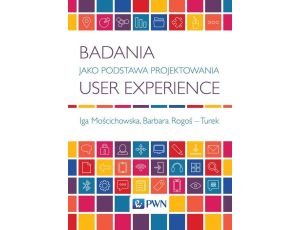
Barbara Rogoś-Turek, Iga Mościchowska
Badania jako podstawa projektowania user experience
77,99 zł
89,00 zł
-12%
Do koszyka

Craig B. Fryhle, Scott A. Snyder, T.w. Graham Solomons
Chemia organiczna t. 2
173,99 zł
199,00 zł
-13%
Do koszyka
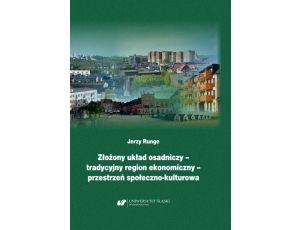
Jerzy Runge
Złożony układ osadniczy – tradycyjny region ekonomiczny – przestrzeń społeczno‐kulturowa
34,99 zł
39,90 zł
-12%
Do koszyka
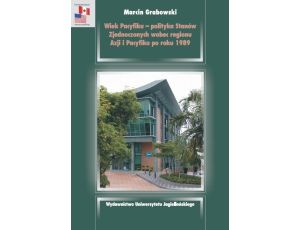
Marcin Grabowski
Wiek Pacyfiku - polityka Stanów Zjednoczonych wobec regionu Azji i Pacyfiku po roku 1989
34,99 zł
39,90 zł
-12%
Do koszyka
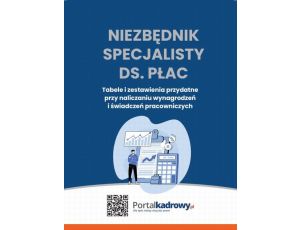
Praca zbiorowa
Niezbędnik specjalisty ds. płac Tabele i zestawienia przydatne przy rozliczaniu wynagrodzeń i świadczeń pracowniczych
55,99 zł
79,90 zł
-30%
Do koszyka

Tomasz Miziołek
Pasywne zarządzanie portfelem inwestycyjnym - indeksowe fundusze inwestycyjne i fundusze ETF. Ocena efektywności zarządzania na przykładzie akcyjnych funduszy ETF rynków wschodzących
40,99 zł
46,80 zł
-12%
Do koszyka
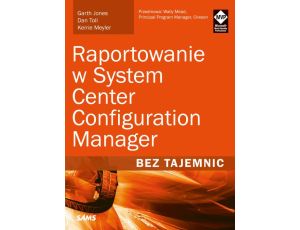
Dan Toll, Garth Jones, Kerrie Meyler
Raportowanie w System Center Configuration Manager Bez tajemnic
55,99 zł
79,80 zł
-30%
Do koszyka
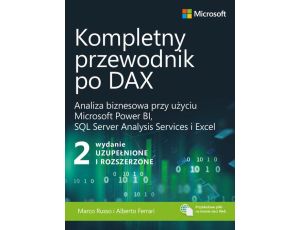
Alberto Ferrari, Marco Russo
Kompletny przewodnik po DAX, wyd. 2 rozszerzone. Analiza biznesowa przy użyciu Microsoft Power BI, SQL Server Analysis Services i Excel
103,99 zł
149,00 zł
-30%
Do koszyka
